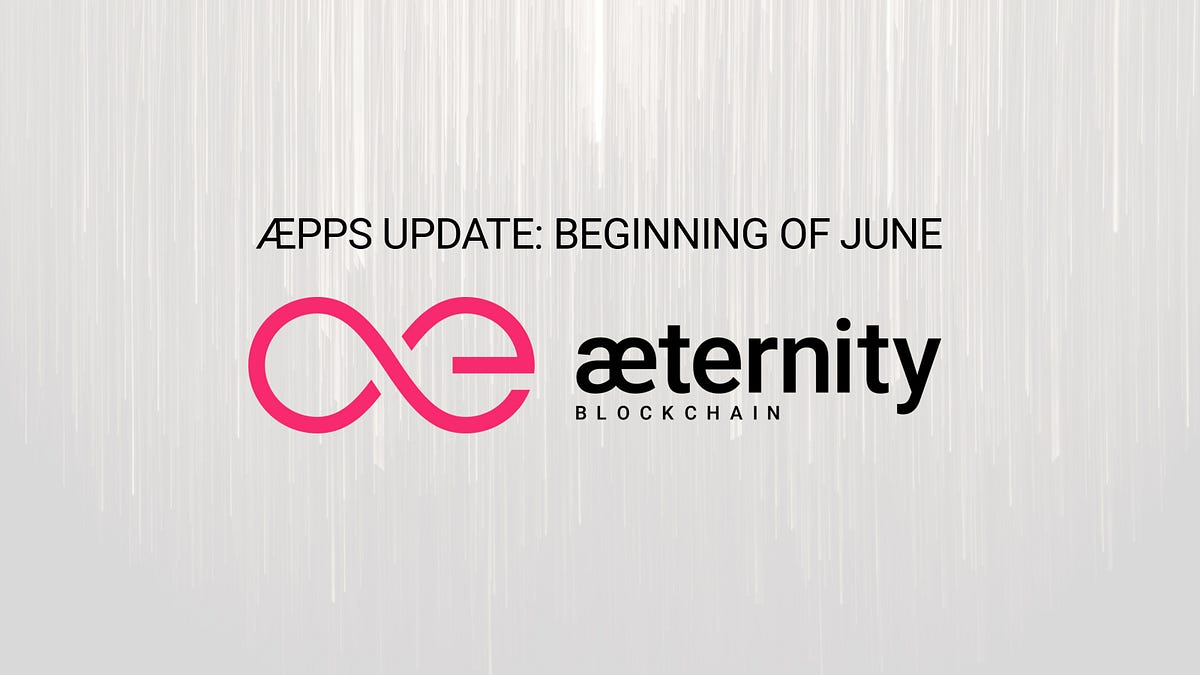It’s an extremely exciting time at æternity as we approach the Mainnet release.

We are making steady progress towards porting our æpps to the æternity blockchain. We will post a detailed update on this in the coming weeks, but in the meantime we’d like to update you on the following topics.
Messages æpp Utility Widget
We updated our Messages æpp to include a Utility widget, which adds a convenient way to access functionalities of other æpps. The widget works in the following way. The user has access to a utility button to the right of their input box. Tapping the button opens the functionality options available to the user from other æpps. Once the user clicks on an option they can pull information and complete a task from another æpp.

For example, tapping on the Transfer æpp icon opens up a contextual view, where the user can transfer tokens to the person they were chatting with (without having to enter their address or find them in the address book).

Once the transfer amount is specified and the user initiates the transaction a summary of the action is rendered back in the chat window. They can get an update on the status of the transaction by referring to this part of the chat.
3 Benefits of State Channels (With or Without Smart Contracts)
In the most simple terms State Channels work in the following way:
Two or more parties open a state channel. Each party enters the channel with a balance written onto the blockchain. The parties transact in the state channel. Their account balances are written onto the blockchain again at the closing of the channel and possibly periodically throughout making use of the channel. Every transaction has to be signed by all parties that are part of the channel.
The immediate benefit of using state channels (once two parties have established enough trust to open a state channel) are:
- The transactions in the state channel are almost instant.
- The transactions in the state channel are free (unlike transactions written on the blockchain which always incur transaction fees).
- State channels can be used to manage risk, due to the fact that the balances allocated to the channel from each party are locked into the channel until the channel is closed.
A simple use case for state channels is video streaming. A user who would like to stream content can open a state channel with a content provider. The user who would like to stream content allocates a certain balance at the opening of the channel. Once they start streaming a certain amount of tokens is subtracted from their state channel account balance at a regular time interval (e.g. every 30 seconds). When the state channel is closed its last state (which includes the final account balances) is written onto the blockchain. All transactions within the state channel are executed almost instantly (via automated transaction signing) and transaction fees are incurred only when data is written onto the blockchain (in the example above this takes place only at the beginning and closing of the state channel).
We will be discussing the various use cases that state channels can enable in more detail in future posts. Meanwhile, to learn more about state channels, please refer to our Protocol repository in GitHub.
Alexander Kahl Joins the æternity Dev Tools Team

We are delighted to announce that Alexander Kahl is joining the æternity team to help us continue delivering high quality developer tools! Alexander is a full stack developer with experience in a wide range of technologies and programming methodologies. Prior to joining æternity Alex worked with companies like Nokia, LShift and iconmobile. At æternity Alex will be working on the JavaScript SDK, enabling developers with minimum experience in blockchain to write powerful blockchain applications.
Towards a Bright Future
As always we look forward to updating you on the progress we make with the æpps ecosystem and developer tools. Feel free to post your comments and questions in the dedicated æpps category in the Forum.
Interested in æternity? Get in touch:
GitHub | Forum | Reddit | Telegram | Twitter | Facebook | Mail

Leave a Reply